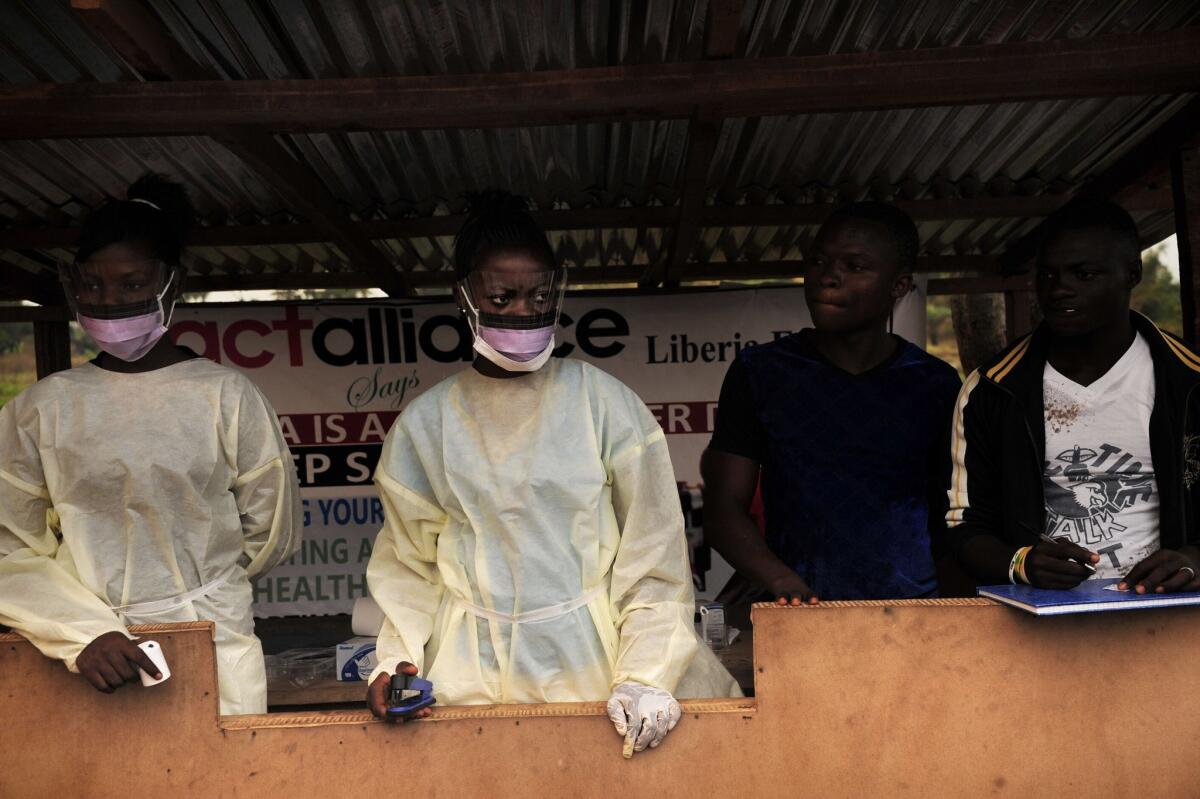Study shows Ebola virus in Sierra Leone mutated at a normal rate

Health workers in Sierra Leone enforce a three-day lockdown to curb the spread of Ebola in March. A new analysis sheds light on the evolution of the current outbreak.
- Share via
A new genetic analysis of the Ebola virus suggests that it has evolved considerably since its introduction into Sierra Leone in 2014 -- but that its rate of change has been similar to that observed in earlier outbreaks.
The report, published Wednesday in the journal Nature, described 175 complete Ebola genome sequences generated from virus samples in patients. The samples were collected between Sept. 28, 2014, and Nov. 11, 2014, from people in five severely-affected districts in Sierra Leone, the country with the largest number of confirmed Ebola cases in the current outbreak.
While another team of scientists completed an initial analysis of the viral genome earlier last year, work had been limited since July when the outbreak “entered a rapid growth phase,” wrote the new study’s authors, members of a Chinese team who have been working at a hospital in Sierra Leone since September.
The new report showed that the genetic makeup of the Ebola virus changed over the period studied, branching into seven distinct-but-related sublineages after its introduction into Sierra Leone. Analyzing the genomes, the authors found that all seven branches had emerged before August, and that multiple versions of the virus circulated in single towns and districts.
High transmission rates in the Waterloo, Freetown and Maforki Chiefdom regions point to those areas as prime spots for continued Ebola surveillance as health workers attempt to prevent and contain the virus in Western Sierra Leone, the authors wrote.
They also noted that the virus mutated at a rate very similar to that observed in the past, further allaying fears that the strains involved in the current outbreak were evolving at an unusually rapid rate that would make it difficult for scientists to perfect treatments or vaccines.
Pardis Sabeti, a geneticist at Harvard who was not involved in this analysis but was part of the team that published the earlier complete Ebola genome report in the journal Science last year, called the new findings “an important contribution to ongoing surveillance of the Ebola outbreak” and praised the Chinese government for sending the team to aid in the fight against Ebola.
According to the Nature study, more than 25,000 West Africans have been infected with Ebola in the current outbreak, and more than 10,000 have died. The World Health Organization reported 18 confirmed cases -- nine each in Sierra Leone and in Guinea -- for the week ending May 3. The agency declared the epidemic over in Liberia on May 9.
For more on science and health, follow me on Twitter: @LATerynbrown




